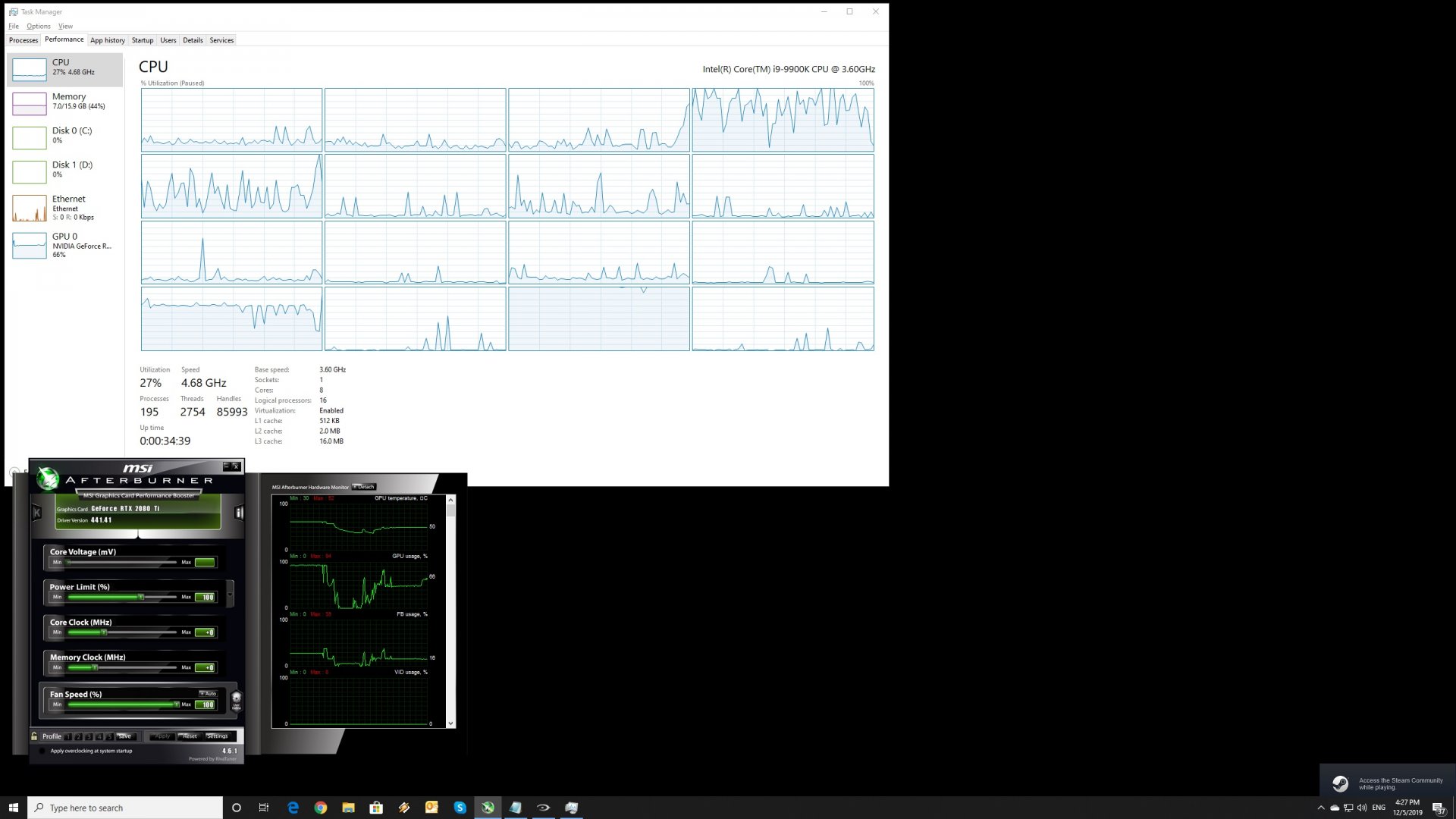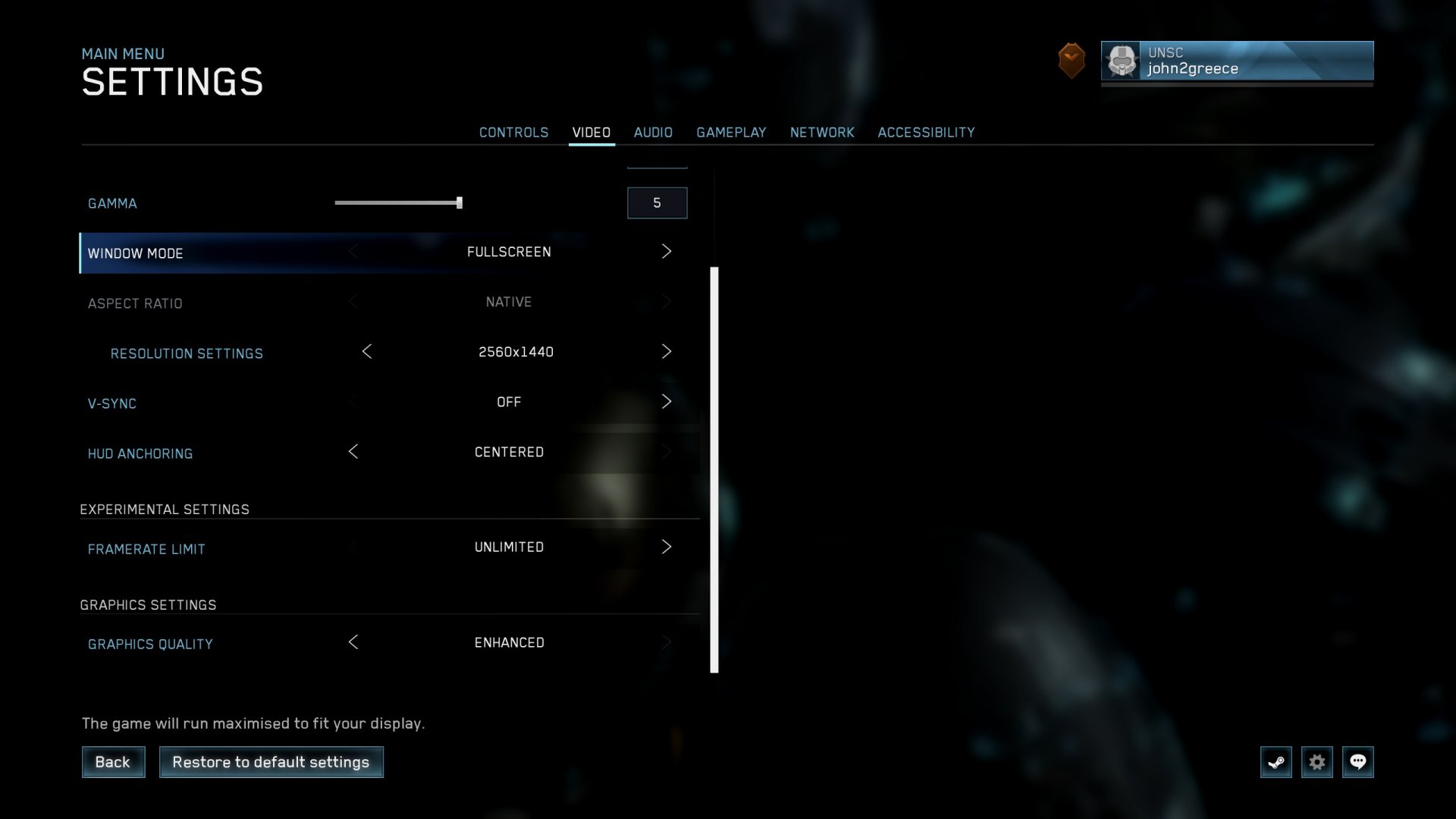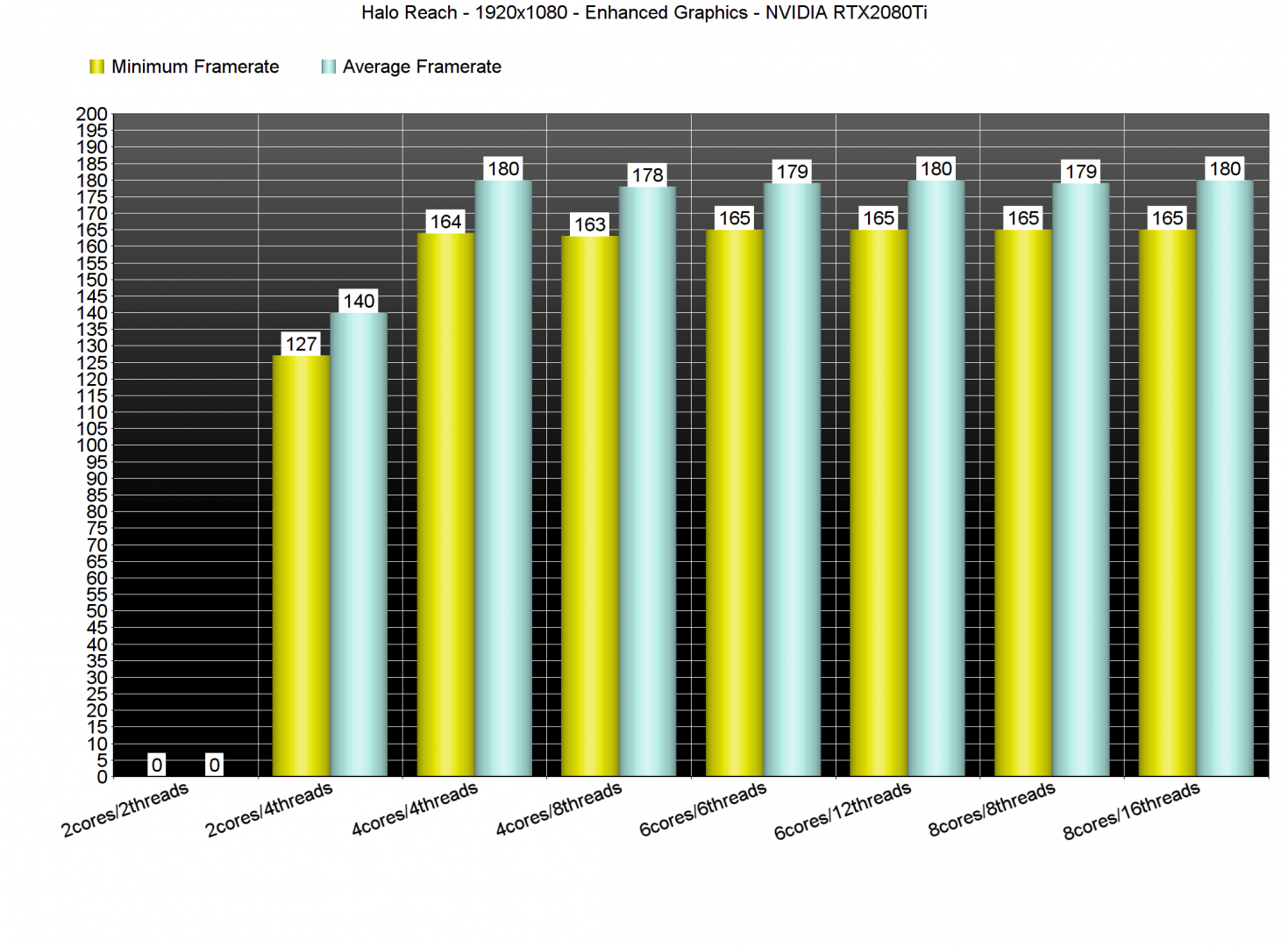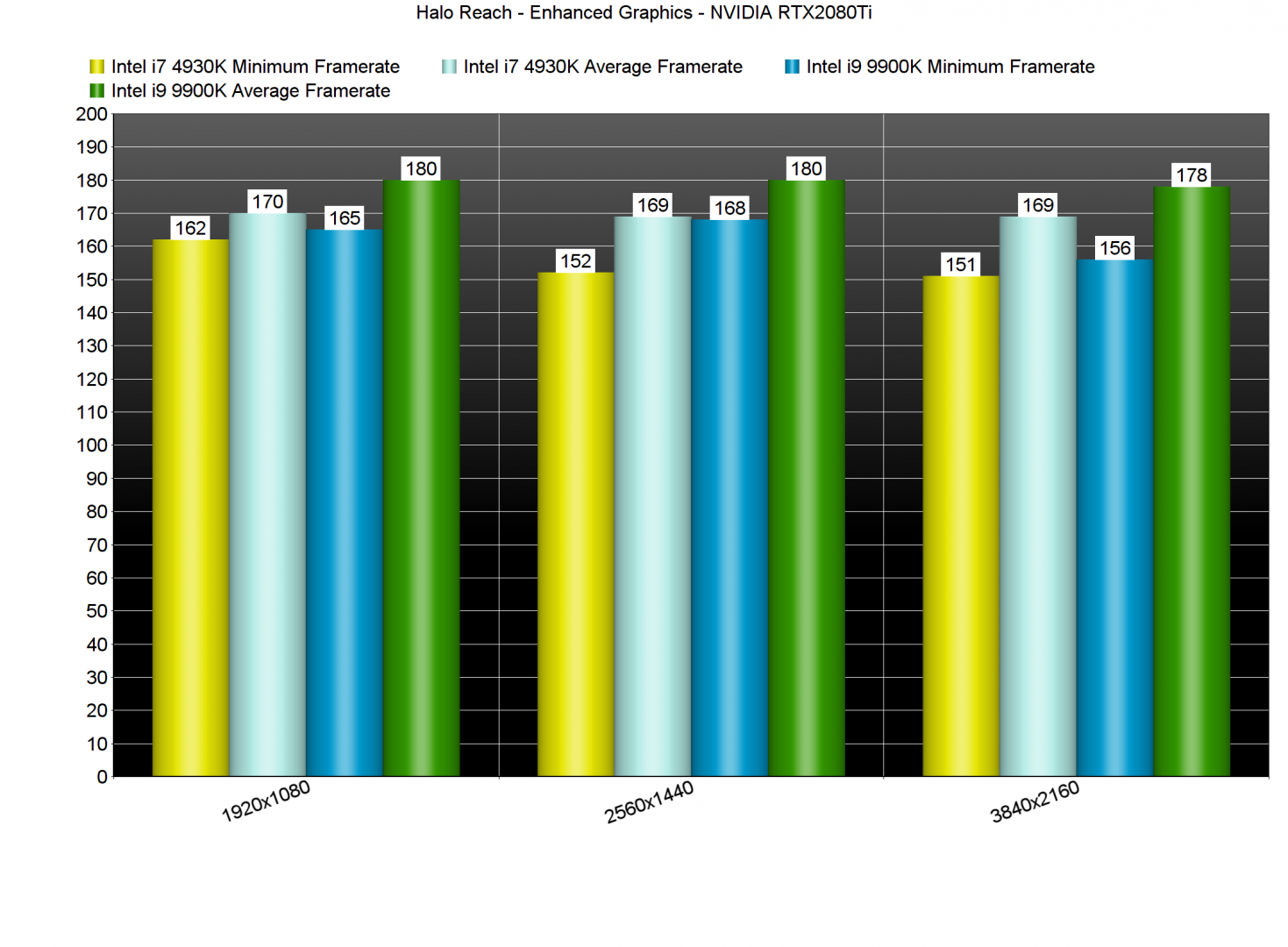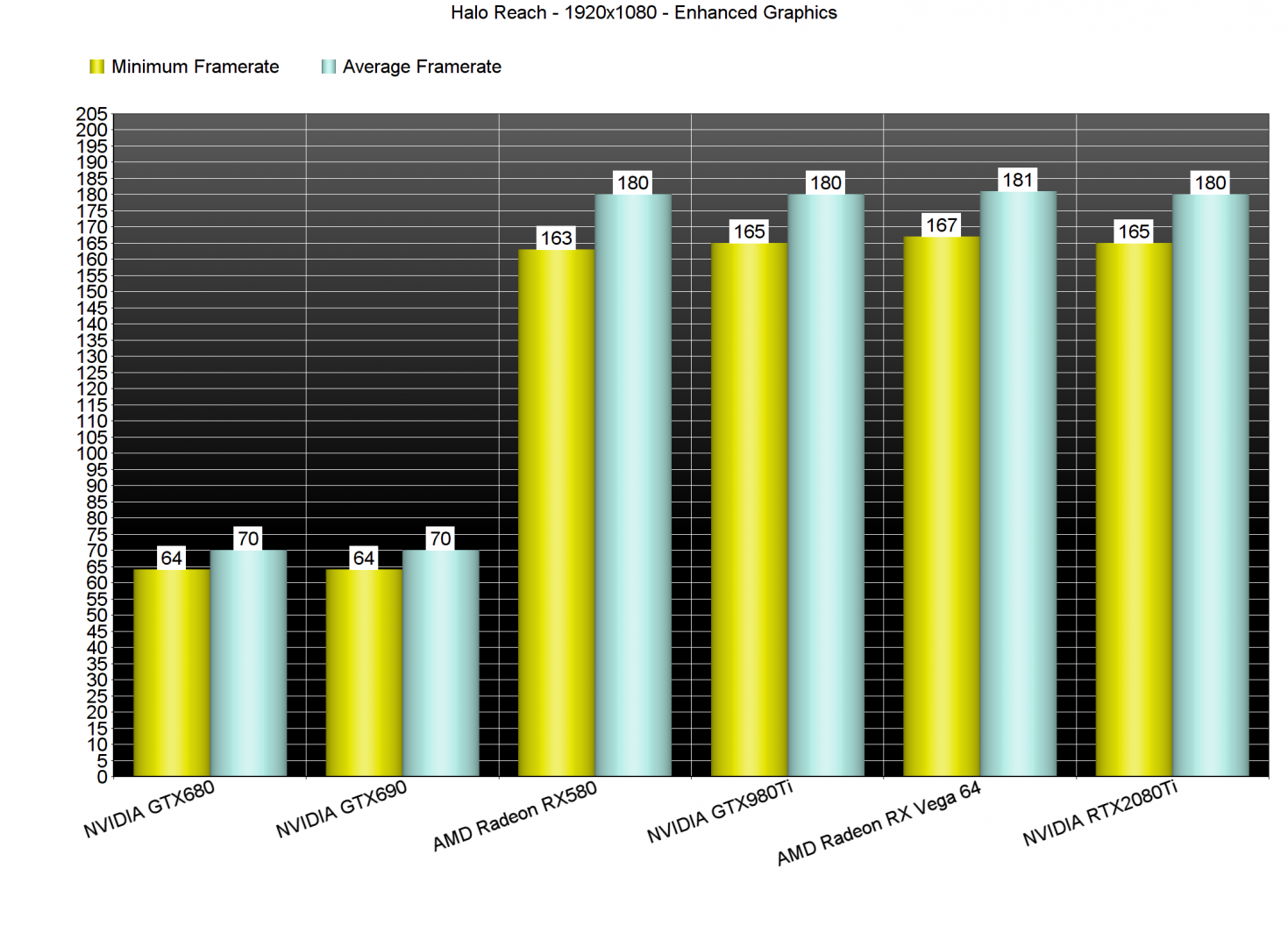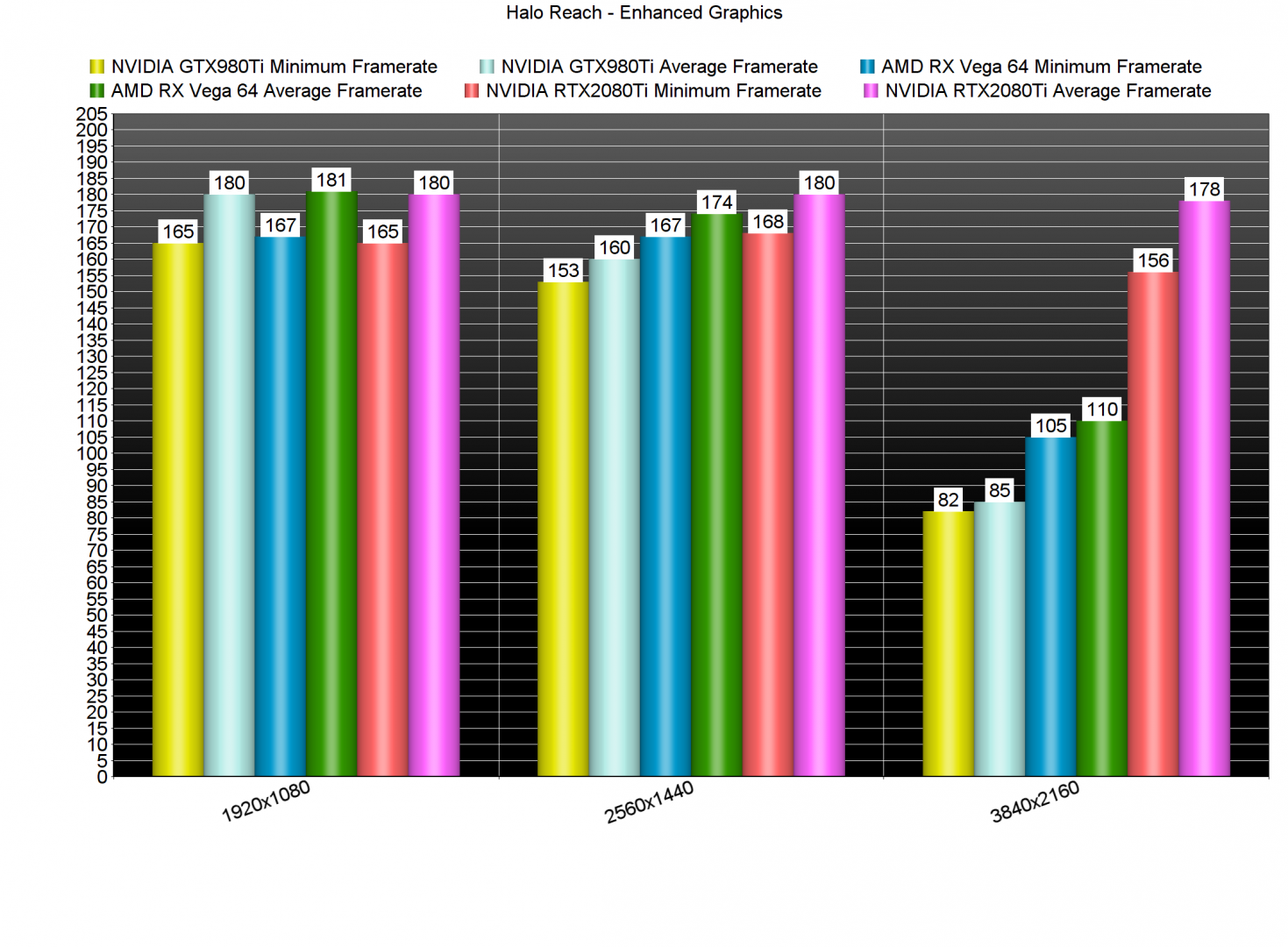The wait is finally over for Halo fans as Halo: Reach is finally available on the PC. Microsoft and 343 Industries are bringing all Halo games to Steam (with the exception of Halo 5) via the Halo: The Master Chief Collection. As such, it’s time to benchmark the first part of the collection and see how it performs on the PC platform.
For this PC Performance Analysis, we used an Intel i9 9900K with 16GB of DDR4 at 3600Mhz, AMD’s Radeon RX580 and RX Vega 64, NVIDIA’s RTX 2080Ti, GTX980Ti and GTX690. We also used Windows 10 64-bit, the GeForce driver 441.41 and the Radeon Software Adrenalin 2019 Edition 19.12.1 drivers. NVIDIA has not included any SLI profile for this title, meaning that our GTX690 performed similarly to a single GTX680.
Microsoft and 343 Industries have not included any advanced PC graphics settings. PC gamers can adjust their resolution, choose between Performance/Original/Enhanced graphics and that’s it. There is also an option to unlock the game’s framerate, which appears to be working great. Moreover, 343 Industries has added a Field of View slider.
Halo: Reach does not come with any built-in benchmark tool. Therefore, we’ve used the first two levels for both our CPU and GPU benchmarks.
Halo Reach does not require a high-end CPU. In order to find out how the game scales on multiple CPU threads, we simulated a dual-core, a quad-core and a hexa-core CPU. Without Hyper Threading, our simulated dual-core system was unable to run the game due to extreme stuttering issues. With Hyper Threading enabled, that particular system was able to push a minimum of 127fps and an average of 140fps at 1080p on Enhanced settings.
The game also run incredibly well on our older Intel i7 4930K system. While overall performance was a bit lower than the one we were getting on the Intel i9 9900K, we were able to get a constant 144fps experience. This is crucial for those that want to experience this Halo game on their 144hz monitors.
Halo Reach also does not require a high-end GPU. As we can see, most of our graphics cards were able to run the game exceptionally well at 1080p/Enhanced. Hell, even our NVIDIA GTX680 was able to provide a 60fps experience.
At 1440p, all of our top three GPUs were able to provide a smooth gaming experience. The same can be said about 4K/Enhanced as even our GTX980Ti was able to offer a 60fps experience. Thus, we can safely say that Halo: Reach will run without any performance issues on a wide range of PC configurations.
Graphics wise, Halo: Reach does not look really hot but then again this was to be expected. After all, this is an old-gen title. 343 Industries has improved numerous textures and the game looks sharper than its X360 version. However, it still cannot come close to what modern-day PC games achieve visually.
In conclusion, Halo Reach is a solid PC product. While benchmarking it, we did not experience any mouse smoothing or acceleration issues. We also did not experience any major stuttering issues or crashes. Furthermore, the unlocked framerate appeared to be working great. Not only that, but it’s also great playing Halo Reach with mouse and keyboard. So yeah, while the game looks dated, it runs incredibly well on the PC!

John is the founder and Editor in Chief at DSOGaming. He is a PC gaming fan and highly supports the modding and indie communities. Before creating DSOGaming, John worked on numerous gaming websites. While he is a die-hard PC gamer, his gaming roots can be found on consoles. John loved – and still does – the 16-bit consoles, and considers SNES to be one of the best consoles. Still, the PC platform won him over consoles. That was mainly due to 3DFX and its iconic dedicated 3D accelerator graphics card, Voodoo 2. John has also written a higher degree thesis on the “The Evolution of PC graphics cards.”
Contact: Email


